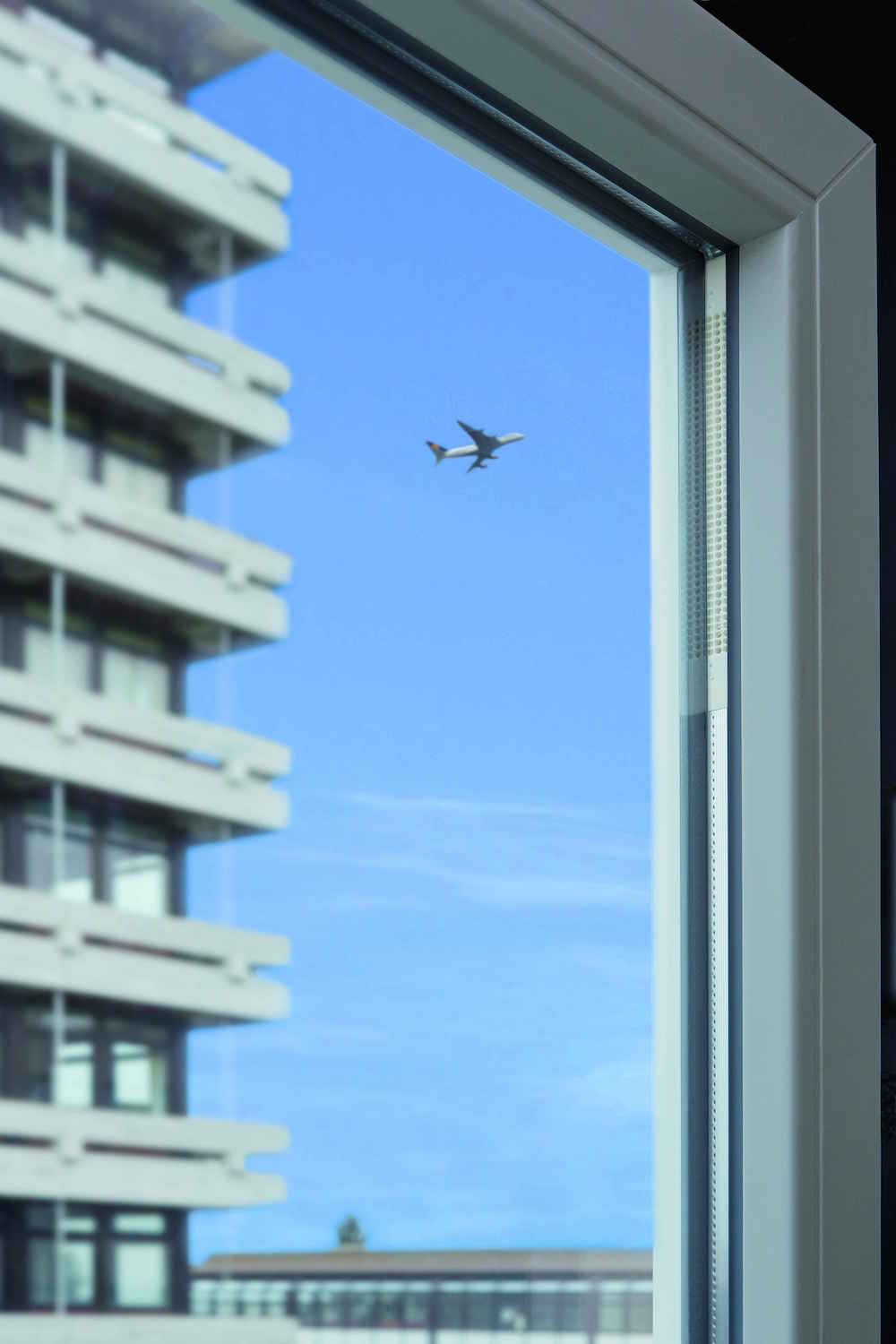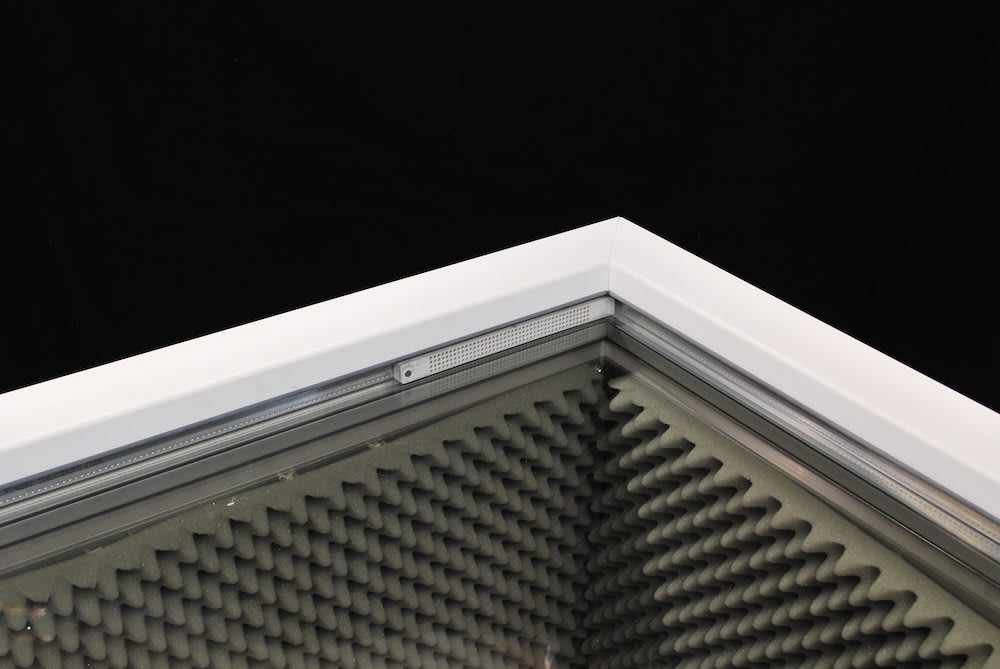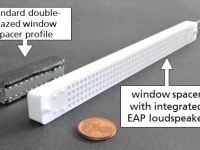
Noise is not just a matter of comfort, but also a matter of health! Especially in industrialized regions, noise pollution was often an underestimated factor regarding its physical effects on human beings.
We developed the prototype of a sound insulation window with fully integrated innovative lowcost loudspeakers that solve the remaining problems of state-of-the-art windows. The prototype window has a better sound insulation than conventional double- and triple-glazed windows.
Background:
Traditional double- and triple-glazed windows have a lack of performance in sound insulation, especially in the frequency range below 200 Hz. Near airports or busy streets especially these frequencies have to be considered. Using laminated glass improves only slightly the low frequency behavior. Real improvements typically with an increased pane thickness, masses and costs. Triple pane windows are, compared to double glazed windows, not beneficial regarding sound insulation. Although there already exist different approaches for acive noise control solutions (ANC) to reduce the sound transmission, none of the concepts was capable of being fully integrated into a conventional window or did not disturb the view through it.
Definition of concept:
We developed slim loudspeakers that are made of electroactive polymers (EAP)and integrated them into a conventional double-glazed window (0.63 in airgap). Especially in the lower frequency range the noise transmission is improved.
EAP allow the design of lighter loudspeakers with more flexible shapes, compared to electrodynamic systems. and with a broader frequency range than e.g. piezoceramic based solutions. The loudspeakers can be fully integrated in the window frame and also serve as connection between the panes. Small microphones are integrated in the housing as sensors. By using distributed loudspeakers we realized a control with enough actuation power to control the sound pressure level inside the window. This leads to a significantly better sound transmission.
Advantages and Innovation:
The approach is fundamentally different from passive solutions, since it cancels out actively pressure modes in the air gap, rather than adding mass or damping. It enables a sound insulation window solution, that is lighter than a comparable laminated window and outperforms conventional double glazed windows. The loudspeakers can be fully integrated into the commercial spacers between the window panes. The costs of the loudspeakers are lower than conventional ones because they are simply made of alternating thin layers of polymer and metal (1.2 mil).
The field of application covers private households, facades of high rise buildings and special noise insulation applications, such as recording studios. Especially for high traffic areas, like settlements near airports or closeby train lines, the active window with EAP-loudspeakers offers a valuable solution.
Also additional acoustic features can be implemented: noise masking (e.g. playing sound of sea breeze instead of traffic noise) or voice scrambling (e.g. to improve the level of confidentiality of vitreous meeting rooms). Furthermore the hardware can be used as stand alone safety solution by programming the controller for glass breaking and using the loudspeakers as an alarm device.
The concept is also suitable for an integration into triple-glazed windows.
-
Awards
-
 2015 Top 100 Entries
2015 Top 100 Entries
Like this entry?
-
About the Entrant
- Name:Oliver Heuss
- Type of entry:teamTeam members:Oliver Heuss
William Kaal - Software used for this entry:ANSYS
- Patent status:none








